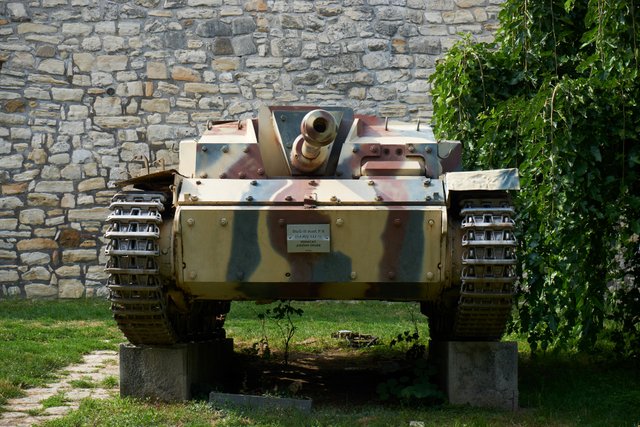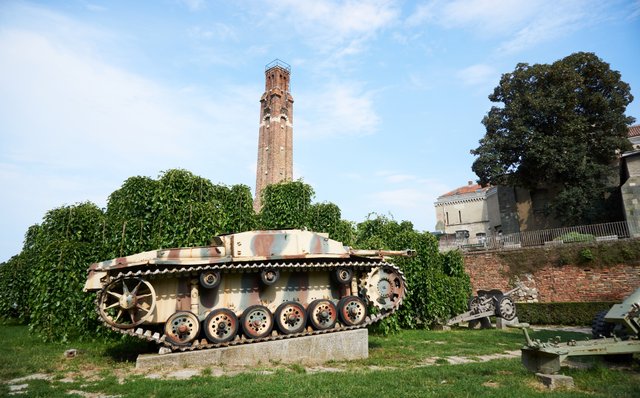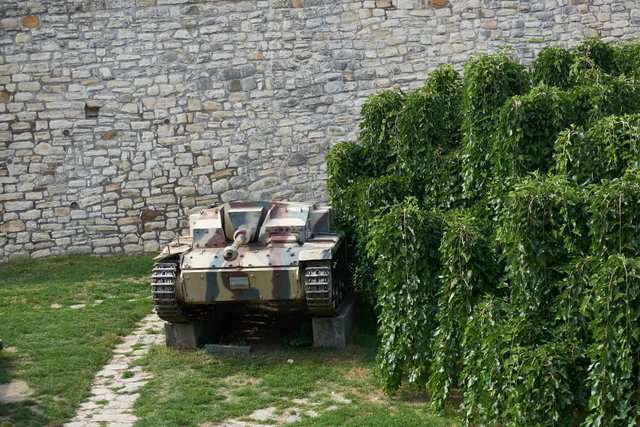The Best German WWII (not)Tank
When we are speaking about weapons used in previous conflicts, we are often referring to the technically most advanced models. In the case of tanks, the vast majority of enthusiast would stress their admiration for the Tiger or Königstiger. However, if we want to have fair and unbiased opinion, we need to include the cost-effectiveness, reliability in combat service and tactical advantages that could be achieved with a particular vehicle.
If we take all those parameters into the account, maybe the best German WWII tank would be "not a real tank" - Stug III.

The origin:
After the experiences of the static warfare typical for WWI, new tactical ideas required new means to fight a highly mobile war.
In 1936, Waffenamt came out with the specifications for the new infantry support vehicle that will allow fast and mobile solution to deal with enemy strongholds. There should be a 75 mm gun, capable to destroy targets up to 6 km in distance (no need for indirect fire). With AP shells, it should be capable to destroy any tank up to the distances of 500m and it should be low-profiled, conceivable, reasonably armored to withstand infantry weapons. Let me explain why relatively weak side armor and the lack of cupola were not the real disadvantages. The desired use against other tanks would be defensive, from a favorable position. In such engagement the winner is the one who strikes first (*very true for the most tank on tank WWII engagements). In other words, it faces other tanks frontally, most of the time. Let’s compare the dimensions of Stug III and other tanks of that time:
• T-34: 3m x 2.45m (width x height)
• Sherman: 2.65 – 3m x 2.75 – 3m
• Stug III: 3m x 2.15 m
Also, in close engagements, up to 500m, Stug III had 100% probability to hit the target and 97% up to 1.000m. If you like numbers, please check the detail specs of various grenades.
In the infantry support role, it also faced all the obstacles with the strongest side and relied on infantry for protection against AT and infantry.

Versions
I'm certainly not an expert in tanks, but I'm an enthusiast who likes to clarify the basics.
Let me help you how to recognize different Stug III versions:
- Ausf.A, short-barrel 75 mm StuK L/24 gun (24 means 24 calibres long barrel, 24 x 75 = 1.8 m). Only 15 vehicles saw the combat in France 1940. L/24 was a low-velocity gun, but more than capable to tackle all the tanks in the existence.
- Ausf.B, with a bit wider tracks, 380 mm instead of 360 mm and more reliable transmission. The production lasted from June 1940 to May 1941, with 300 vehicles finished
- Ausf.C, the same as B, only without the gunners port. It was produced in April 1941, 50 vehicles in total
- Ausf.D, is indistinguishable from C, with upgraded on-board intercom. The production lasted from May to September 1941, with 150 vehicles in total
- Ausf.E, produced until February 1942 finally brought something new: it got MG-34
- Ausf.F, now with a long barrel gun, StuK 40/L43 that allowed Stug to become a tank-hunter. The production ended up in September 1942 after 366 vehicles made
- Ausf.F8, with an even longer barrel, StuK 40 L/48 and naturally faster muzzle velocity (760 vs 740 m/s for Pzgr.Ptr.39). It was produced from September to December 1942, with 250 vehicles in total.
- Ausf.G, the last version, optimized for the cost-effectiveness. More than 10.000 vehicles were made.
Notable users:
Keep in mind that Pareto distribution is everywhere. It can be found in the distribution of wealth, in music industry, in sports and – in war. In the hands of inexperienced crew, any tank is just a pile of steel. If you don’t believe me, check the stats of Arab – Israeli conflicts or compare the performances of Abrams operated by Americans (unbeatable) with the performances of (*similar!) tanks in the hands of Iraqis (ISIS captured and destroyed many of them) or Saudis (disaster in Yemen).
Stug was the tool for numerous masters including the best tank ace of WWII, Michael Wittmann, Walther Oberloskamp, Hauptmann Peter Franz, Walter Kniep and numerous others.
After the war
Stugs stayed in service until the 50’s and 60’s when the new generation of tanks, such as T-54 and M-48 made them completely obsolete. Yugoslav army also inherited Stugs, Shermans and T-34/85 after the WWII ended. trials during the 50’s showed that T-34 could be used as the support vehicles and that tank-on-tank engagements should be avoided, but it was still capable to disable modern tanks if hit weak points. Those tanks were used even in the latest conflict in the 90’s. Sherman was obsolete due to the lack of armor (although small amount was kept). Jacksons stayed in service even in 2000’s for special missions because those tanks can elevate the barrel at impossible angles and Stugs... They had no role in the new army, and Yugoslavia gave them to Albania as the present. Some Stugs were used as fixed guns on Golan Heights and became an easy pray for modern Israeli tanks.

Legacy
Sweden had very favourable experience with Stug, so they decided to make their own tank, the one of a kind, Stridsvagn 103 (Strv 103)
References
I hope you enjoyed reading. If you want to see this Stug, it’s paced in the Military Museum in Belgrade


What can be better than shooting some American birds with a German WW II tank !! Don't tell me u love birds, bro.
Jokes apart, u just wrote an amazing article. Writing about weapons is always better. And about WW II thing, even more! :D
Cheers bro!
No... It would be soooo wrong... We would need Flakpanzer Gepard for a proper bird shooting
Supercool looking beast. One Gepard can be seen in the Military Museum in Brussels, facing Mi-24. Double Dose of Cold War Cool Equipment :D
Concerning the M-36 Jackson, we have finally stopped using them in 2004?! 61 years after that model was introduced.
This photo is from 1999 when the war ended. American Abrams A1M1 and Serbian Jackson.
About M-36, in Serbian
Get a war you guys...
we wont mind if angels join us! :D
So many good comments today that my VP drained to 80% !!!
ops yah! Gepard would be more useful, it looks badasssss. Then we can use Stags for shooting scarecrows. :D
Didn't have any idea about this. Very interesting article about tanks. I have stayed with Bangladeshi Army (to help them out with translating) in Sabac when they were buying Tanks from Serbia. After Jugoslavia is gone, Serbia is still great in making Tanks when it comes to the case about making manual Tanks.
Haha, you are legend :D
It was a contract for Lazar, right?
Yeah as far as I know even India, Kenja and also some other countries bought it. It was a huge project I think.
You gave me an incredibly good idea for my next yu-stem post :)
Wow. I am happy to hear that. I will definitely read it :)
zanimljivo da steempeak prvo pokaze video koji sam jedva nasao u tekstu :) (dokumentarac o Witthmannu). Zanimljiv tekst, a i zanimljiva biografija Witthmanna.
Pssst, ne verujem da uploadovan potpuno legalno :)
https://steempeak.com/
Inčresting... Lepo je videti da stalno nastaju nove platforme. Hodl!
vrlo verovatno da nije :D
tu su vec duze vreme, igrom slucaja sam ga koristio od testing faze, vrlo zanimljivo uradjeno.
This post has been voted on by the steemstem curation team and voting trail.
There is more to SteemSTEM than just writing posts, check here for some more tips on being a community member. You can also join our discord here to get to know the rest of the community!
Hi @alexs1320!
Your post was upvoted by utopian.io in cooperation with steemstem - supporting knowledge, innovation and technological advancement on the Steem Blockchain.
Contribute to Open Source with utopian.io
Learn how to contribute on our website and join the new open source economy.
Want to chat? Join the Utopian Community on Discord https://discord.gg/h52nFrV
it was the part of history of tanks serving in the German Army from World War, the interwar period, and the Panzers of the German .